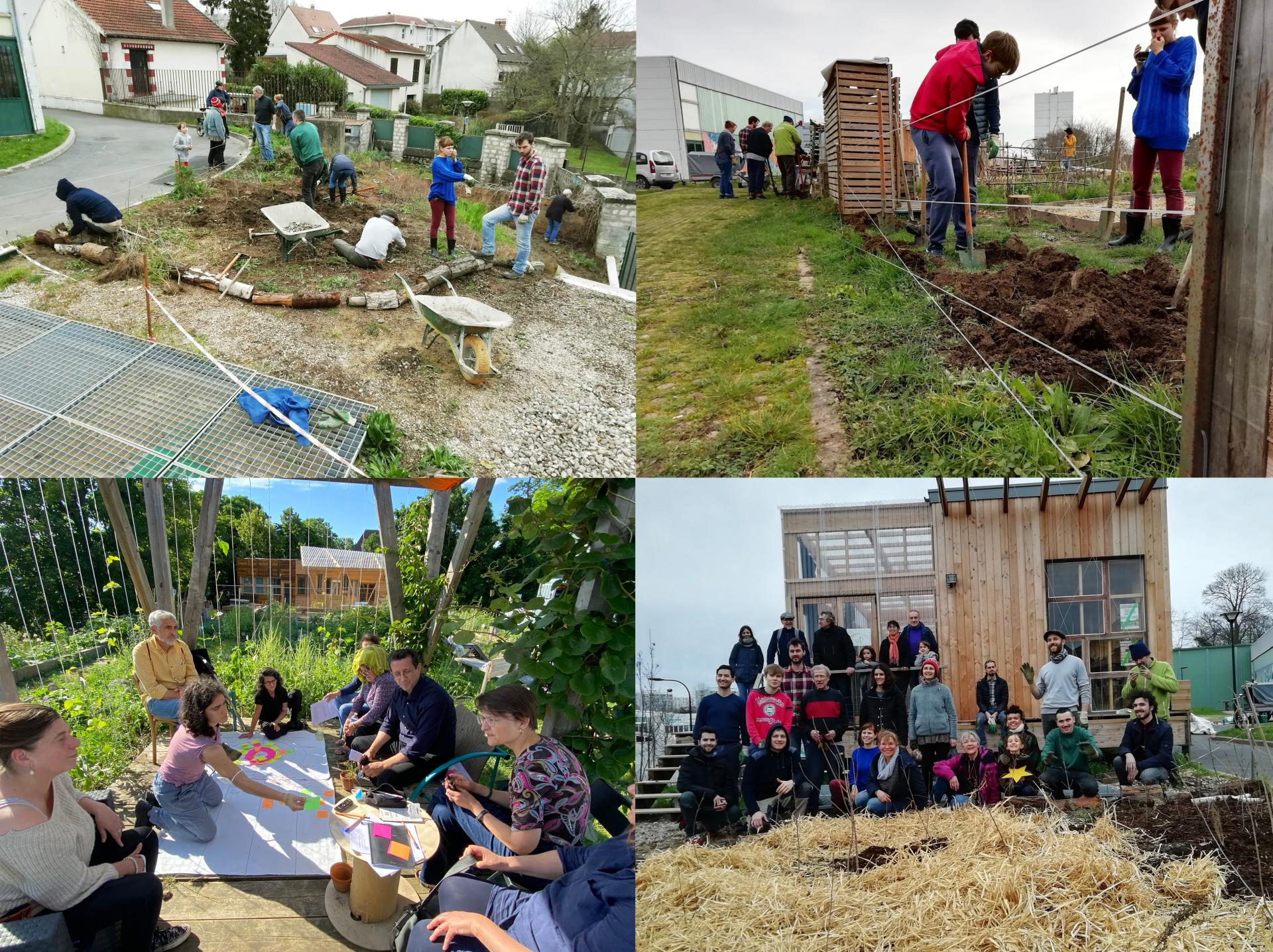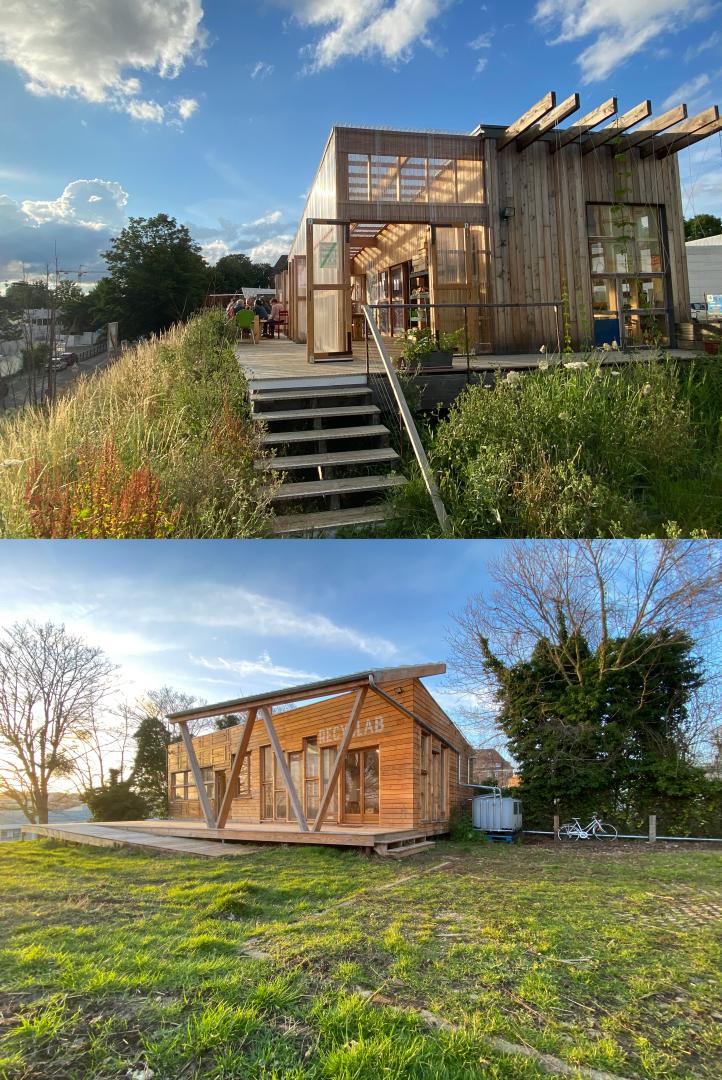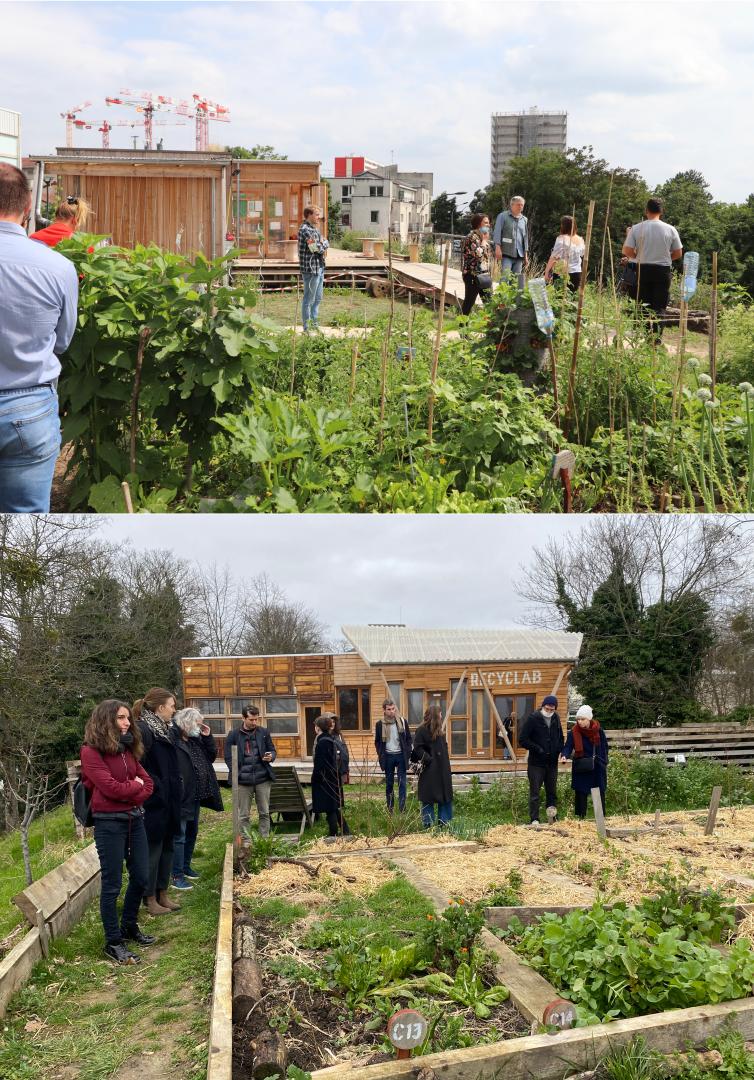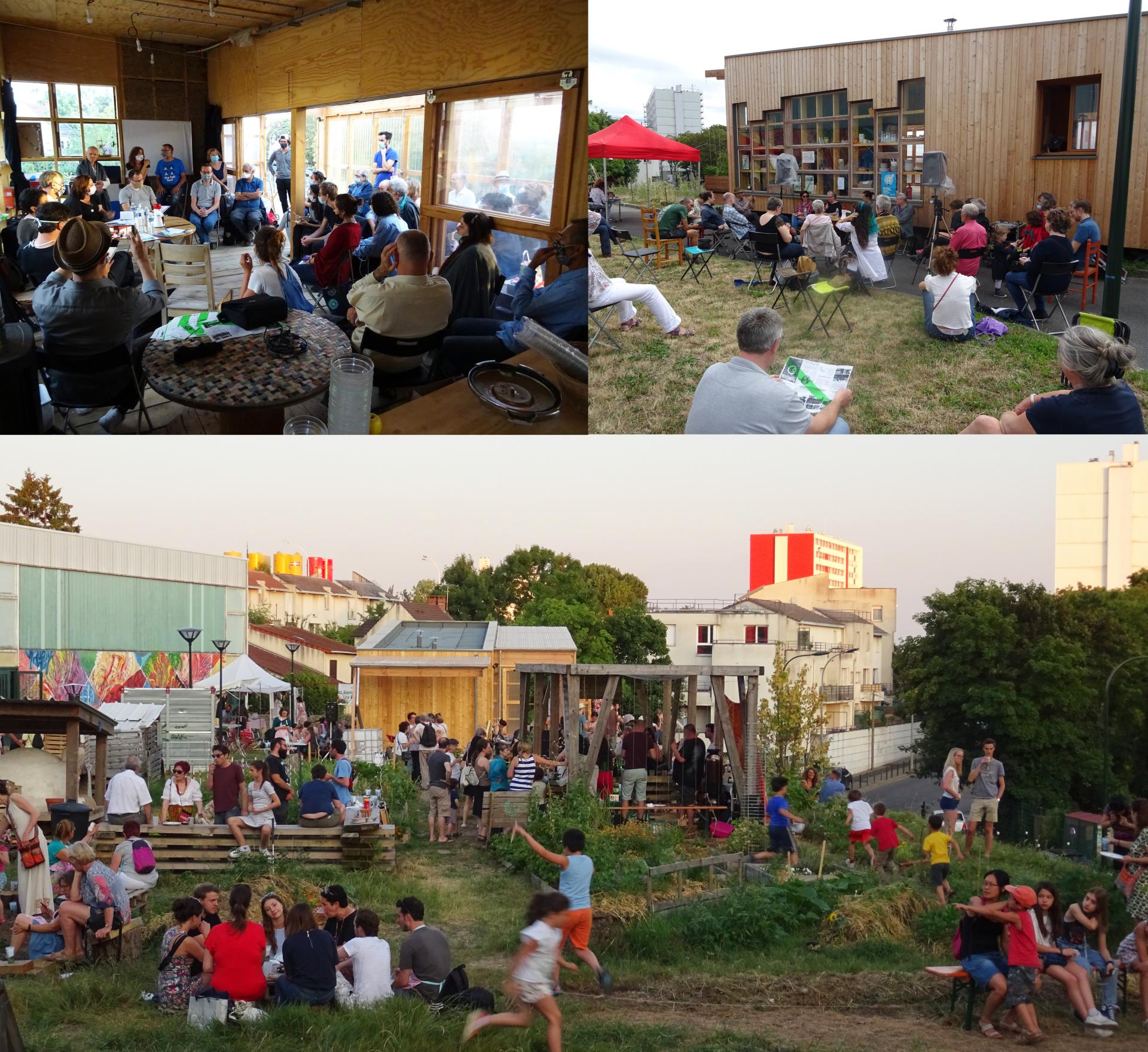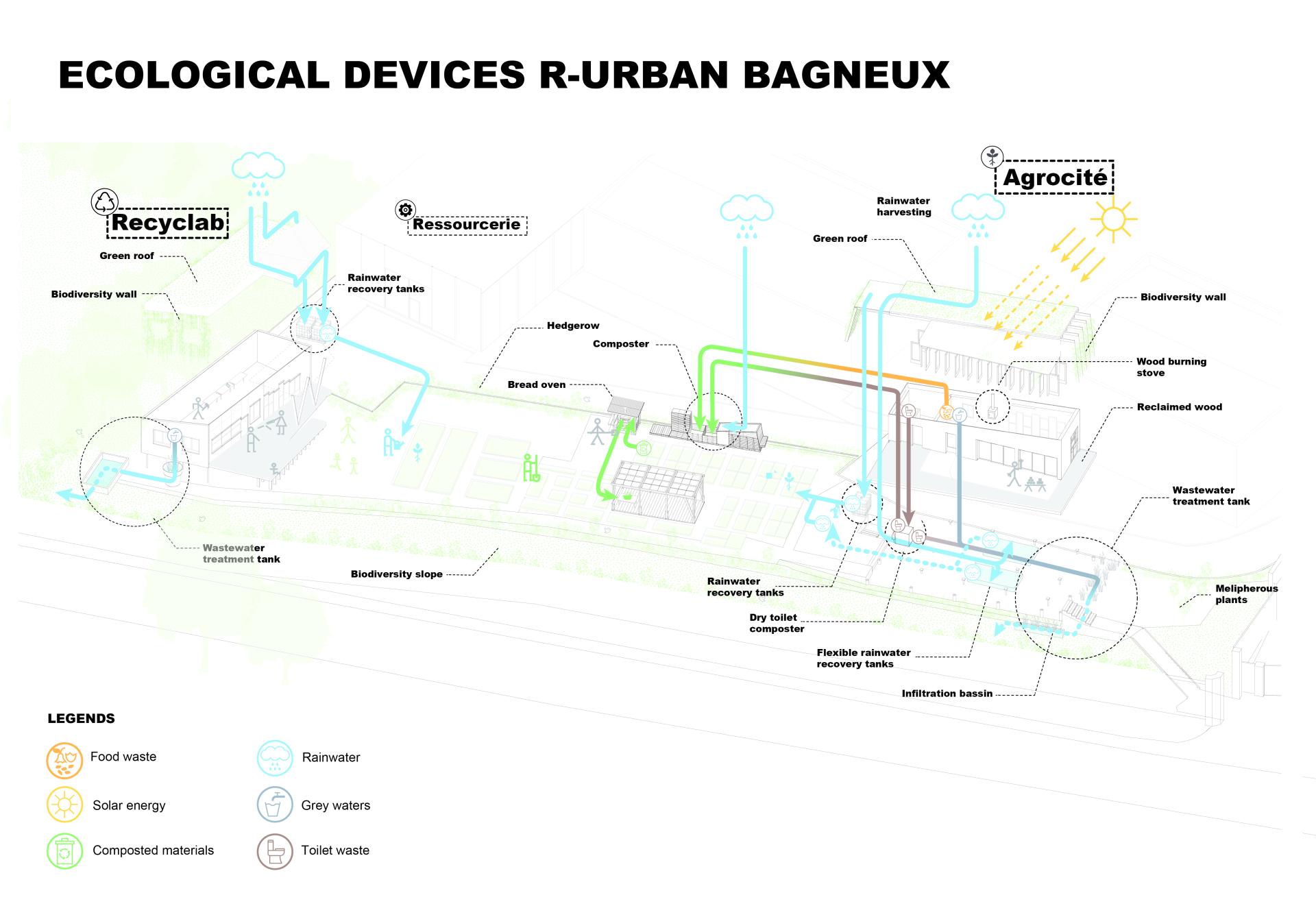R-Urban Bagneux
Basic information
Project Title
Full project title
Category
Project Description
R-Urban promotes the regeneration of urban land in deprived neighbourhoods, based on eco-designed reversible facilities. The R-Urban hubs are built mostly from locally sourced and/or recycled materials. They offer cultivation plots, training programs and cooking sessions using food grown onsite. By changing lifestyles on a local scale, fostering citizen initiative and participation, the R-Urban strategy creates social and ecological value while contributing to a wider ecological transition.
Geographical Scope
Project Region
Urban or rural issues
Physical or other transformations
EU Programme or fund
Which funds
Description of the project
Summary
R-Urban create a series of ecological and civic facilities using urban land in a reversible way, as part of participative regeneration processes of deprived neighbourhoods. Where previous regeneration models often involve no physical spaces managed by communities, the setting-up of these facilities promotes the development of local networks, closed ecological and economic circuits, supporting the emergence of collaborative and solidarity practices involving citizens. Thus, the residents who live near the R-Urban hubs become actively involved in changing their lifestyles in a more resilient way while also managing a collective facility as an urban commons.
The hubs and their local ecological systems constitute an innovative urban infrastructure that can contribute to a wider ecological transition in neighbourhoods rooted in new collaborative social and economic practices. They act as prototypes for new ways of building and managing the neighbourhood and demonstrate the positive impacts of ecological transition, generating economic, ecological and social benefits. Moreover, they foster communities’ adaptive capacity and potential for collective learning and acting together.
Two R-Urban hubs have been built recently in the 40000 residents suburban town of Bagneux (South of Paris). The hubs are located on a previously unused space near multiple schools and the premises of many civic organisations, being embedded in a network of eco-activities.
Initiated in partnership with the City of Bagneux and local organisations, the Agrocité Hub, finalised in 2020 and specialised in urban agriculture was co-designed and built with the participation of the users. The hub offers cultivation plots, training programs, cooking sessions using the food grown onsite. The Recyclab Hub specialised in eco-fabrication was initiated in 2021 to ensure complementarity with Agrocité, and reach a wider range of users hosting reduce/reuse/recycle initiatives, DIY and upcycling workshops.
Key objectives for sustainability
R-Urban buildings are reversible, meaning that they can be easily dismantled and relocated. This has been demonstrated by similar hubs built in Colombes which were dismantled and relocated in two other neighbouring towns - Nanterre and Gennevilliers - helping as such to mitigate the ecological footprint of the buildings. The principle of reversibility compels the architectural design process to use certain construction techniques and materials that are easy to disassemble, transport and reassemble. Moreover, the construction materials are sourced from local and/or circular systems and represent up to 75% of the total materials used. These include recycled materials (wooden cladding elements, reused drying panels and windows reclaimed from demolitions) or bio-sourced materials (local wood, straw, vegetable strata). The hubs have been built with local companies and parts have been co-constructed with the users
Another goal of the R-Urban Hubs in Bagneux was to limit as much as possible the artificialisation of soil to preserve their permeability and limit the risk of flooding, but also to maintain soil biodiversity and fertility. The hubs also offer a bioclimatic shelter in line with climate adaptation strategies. In addition, the hub aims at bolstering vegetation and insects and birds presence by enabling biodiversity corridors. For example, three of the external walls of the Recyclab are lined with plant supports for vegetation to grow on. A number of eco-devices were put in place to test the capacity of the buildings to reduce, recycle and generate ecological loops: a compost system, dry toilets, green walls, grey water plant filtering system, rainwater collection, passive heating. These devices together with other principles adopted in the construction have improved the ecological parameters in terms of C02 reduction (embedded in the construction and during occupation and use), water consumption reduction, energy consumption reduction, organic waste reduction.
Key objectives for aesthetics and quality
The overall aesthetic of the buildings is defined by sobriety and is largely influenced by the reduce/reuse/recycle principle. This principle compels the buildings to be minimalistic and to choose the materials wisely to assert both functionality and a simple aesthetic. For example, the use of polycarbonate honeycomb panels in the facade of the Recyclab and patio of the Agrocité acts as a greenhouse (based on bioclimatic principles) but also as a reference to the materiality aesthetic of AAA’s buildings. In the same vein, a large majority of the materials are either reused or recycled. Not only does the weathered/recycled wood of the two buildings communicate the project’s priorities, it also demonstrates the possibilities of using recycled materials. This is both an ecological statement and an aesthetic choice that is most easily identifiable on the facade of the Recyclab, which is made from reused wood doors. In this sense, the aesthetic is induced by ecological needs.
Similarly, the aesthetic of the entire site was equally considered. As a whole, the site represents a sort of ‘rural’ enclave in an otherwise dense urban and industrial environment, acting as a peaceful and calm island of greenery with wooden structures away from the busy city.
Collectively, these strategies grow engagement by generating curiosity and have effectively been repossessed by the users. Indeed, inhabitants from the surrounding areas are mainly responsible for the sourcing of the furniture that are reused or built with recycled materials, and the floor of the Agrocité was designed and built by a local user that used broken ceramics to create unique and beautiful patterns.
Key objectives for inclusion
The general idea of the R-Urban Hubs was to involve citizens in the making of the project at every step, from design to management. During multiple workshops, local residents were invited to take part in the co-mapping of potential sites and resources, co-designing and prototyping of eco-devices and co-construction of the buildings and landscapes. This participation enabled a true appropriation of the place by its users in the short-term and long-term. The governance of the project is also unique in the sense that it is designed to involve citizens in the management of the site as much as possible at different scales. There are monthly public co-governance assemblies and multiple activity groups that manage specific parts of the project, for example the DIY team, the gardening or the cooking teams. This multi-layered mode of governance fosters a larger reach and appeals to different availabilities, mentalities and interests. The citizens were therefore involved in the early stages of the project to design and build a place they could identify with, but they are also key to the functioning of the Agrocité and Recyclab and to develop activities that they yearn for, ranging from handiwork, cooking, pedagogy or gardening.
Using alternative types of governance is a unique way to bring people together and foster community life around a multitude of ecological goals that are centred around one place. This is exemplified regularly by events that take place onsite, like training sessions or public round tables about ecological transition including dinner parties, that all aim at fostering conviviality and integration. Agrocité and Recyclab are also places where other local organisations can meet and host their own events, which ensures a diversity of public, fostering the integration of different people with different interests. As a result, it bolsters solidarity and exchange of knowledge and practices in a town that is very diverse, with a strong working-class heritage.
Results in relation to category
Far from being the sole tool to foster a sense of nature, the gardening and caring aspect of Agrocité and Recyclab is key to the acculturation of the habitants to nature underway in Bagneux. It is not only about growing plants and vegetables or protecting biodiversity, this is merely a medium for reconnecting with nature through pedagogy and practice, which can be summed-up as “learning-by-doing”. Going to Agrocité and taking part in the weekly workshops and activities is a great gateway to learn about environmental processes at the local scale, from daily-life practices to more global concepts. In regard to the impact achieved by the vegetable garden, it is something that easily brings people together, in addition to being the main vector of attractivity from the inhabitants’ point of view.
The impact of the project can be measured also by its influence at the regional level. The R-Urban model appeals to many policy makers and it has already been adopted in other contexts (Cachan, Arcueil, Cesson, Département Seine Saint Denis and London). Many stakeholders, either from the public sphere or from other organisations, have visited the hubs in Bagneux. In that sense, the project already is a vibrant example of what can be done at the local scale to better the everyday life of citizens, and to take part in the ecological transition by shaping new imaginaries.
In addition, the R-Urban strategy has already been studied from an economic standpoint with community economists Katherine Gibson and Maliha Safri, more precisely to determine its economic value linked to the benefits it creates in terms of health, climate adaptation and mitigation, employment, sociability and so on. All of these “returns” represent the broader social and environmental value of the R-Urban strategy. Such initiatives are very useful in quantifying the results of an experimental project like R-Urban as well as understanding its wide range of impacts.
How Citizens benefit
The Bagneux R-Urban Hubs are embedded in a sustained bottom-up process that consists of collective actions: co-mapping of potential sites and resources, co-conception of the buildings and landscape, co-construction and finally co-management of the hub. Since the early stage of the project, there was also a proactive involvement of civil society, including local organisations, municipal services, schools and dwellers from the surrounding neighbourhoods. This involvement was carried out mainly through participatory workshops, during which people were learning-by doing how to tackle ecological challenges at the level of everyday life. Public meetings and pedagogical activities are regularly organised in the Hub which allows for a widespread awareness on the challenges of ecological transition, having reached so far more than 5,000 people, mainly Bagneux inhabitants - including 30% of youth, dwellers form neighbouring towns but also from the Ile-de-France region and Europe more broadly.
The R-Urban Hubs are also an opportunity to support local stakeholders to develop actions linked to everyday resilience, practices to reduce energy and resources consumption through reduce/reuse/recycle principle but also upcycling and cradle-to-cradle initiatives. However, civil society is not only an actor to be supported, but also an integral part of the governance model of the R-Urban Hubs and as such takes part in the everyday decision-making. This model is enshrined into the commons principle based on resource mutualisation, mid-term and long-term vision and equal sharing.
This type of governance has the advantage of allowing a complete re-appropriation of the goals and functioning of the R-Urban Hubs, enshrined in a charter co-designed with the users. In addition, their increased social resilience capacity has already been put to the test during the first lockdown in Paris in 2020, when users implemented forms of digital management and communication.
Physical or other transformations
Innovative character
In a context in which ecological transition faces a number of deadlocks due to the short-term vision and the complexity of the decision-making sphere, R-Urban provides a systemic solution to a systemic issue, easy to reproduce and accessible to anyone at the local scale. It allows all citizens, professionals and local administrations to commit to everyday resilience and thus participate in the ecological transition through bottom up initiatives.
Another deadlock to implementing the ecological transition at all scales is its cost. In this sense, the initial investment of public administrations in R-Urban Hubs is substantially low and is limited to the sole implementation and building phase. The day-to-day functioning of a hub requires only few resources being for the most part secured by the governance and economic model as well as the implication of the users of the hub.
In contrast with the top-down regeneration, R-Urban proposes an innovative model based on physical infrastructure for the development of civic networks, closed ecological and economic circuits, supporting collaborative solidarity practices among citizens.
The R-Urban Hubs are also innovative in their use of eco-design principles and prototypes (dry toilets used for compost, phyto-remediation, ecological sanitation, revegetation, etc.). Such eco-design allows for short circuits and an onsite treatment of waste, water and so on, but also for an easy use and managed by the members of the hub.
A key innovative aspect of the hubs is their unique type of collective governance based on the principle of the commons (applied to the soil, water, seeds, plants, tools, etc.). This democratic governance model allows for a strong social resilience, deemed crucial in times of crises.
A final element of innovation is the use of derelict spaces to develop R-Urban Hubs. It creates social and ecological value and explores sustainable relationships with nature in disenfranchised neighbourhoods.
Learning transferred to other parties
The R-Urban strategy has been designed to allow a wider dissemination towards other project leaders and cities in France and elsewhere. In this sense, a range of "open source" and "Creative Commons" documents including the R-Urban Charter are available on the R-Urban website.
Lectures and public educational workshops are organised periodically on themes related to the ecological transition: urban agriculture, biodiversity preservation, reuse and recycling, short circuits. This allows participants to develop new initiatives in different contexts and scales. Research seminars are hosted to study the implementation of the strategy and its results, but also to conduct rigorous evaluations and disseminate the strategy to specialists and academics. The R-Urban experience is currently part of a JPI Urban Europe research and innovation project CONECT (2022-25), in which AAA is a partner, leading the French team.
R-Urban is also directed towards policy makers and local administrations from other cities interested in developing the R-Urban strategy according to the model carried out in Bagneux. They are regularly introduced to the necessary partnerships and financial set-up and the approach for the setting up and emergence of a commons-based governance.
Also the R-Urban approach is internationally considered an example of best practice of community-led resilient regeneration, the model being already replicated in London, by Public Works in collaboration with London Legacy Development Corporation and Poplar Harca housing organisation,
Other professionals have called upon AAA to accompany them in their reflections on transition and ecological urban development for other territories and scales. For example, AAA was invited to participate in the development of the “Vision 2030” strategy for the Seine Saint-Denis department. As a consequence, AAA is currently working in partnership with the department development agency at the implementation of a number of hubs.

